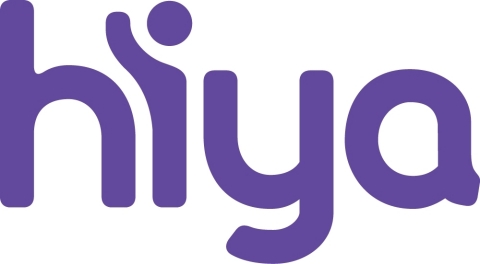Report: The Average Mobile Phone User Gets 14 Spam Calls Per Month
Report: The Average Mobile Phone User Gets 14 Spam Calls Per Month
The latest Hiya study identified the 7 most popular phone scams so far this year
NEW YORK--(BUSINESS WIRE)--At its State of the Call Summit today, Hiya, the leader in voice security, announced the results of its latest study on phone fraud and spam. The big takeaway is that one-fourth of all unknown phone calls analyzed by Hiya were unwanted, and the average mobile phone user received approximately 14 spam calls per month.
- To download the report, visit https://work.hiya.com/sotc-summit-report.
Hiya has been reporting on phone fraud and spam for several years. For the first time, its study includes a list of most common phone scams of the year. While the exact numbers are unclear, Hiya believes that many of these schemes involved the use of AI, as directed by scammers.
Here’s a list of the top phone scams so far in 2023:
Amazon – Amazon impersonators may say they suspect an unauthorized purchase, or that the credit card linked to the account needs to be updated. Often the scammers start with a robocall, and if the recipient falls for the scam and presses a number, a live operator will come on and try to get the victim to reveal their Amazon login information or a credit card number.
Insurance – There are a wide variety of insurance scams related to auto insurance, life insurance, health insurance and more. Fraudsters may be trying to sell a bogus insurance policy or claim that the victim needs to pay an outstanding bill. During the call, a scammer will try to obtain sensitive personal information, such as a social security or credit card number.
Medicare – Medicare scams have been around for years. Fraudsters try to obtain a person’s Medicare number to falsely bill the government for medical services. Recently, scammers have offered victims free home COVID tests which they say will be paid for by Medicare.
Credit card – With someone's credit card number, a scammer can go on a shopping spree. That’s why credit card scams are so prolific. Scammers try many different tricks to get victims to give out their credit card number and security code. They may say there is a package delivery that needs payment, a subscription that needs to be renewed, or that they’re calling from the credit card company’s fraud department because of a suspected unauthorized transaction.
Cryptocurrency – Cryptocurrency phone scams seem to have no geographic boundaries. Hiya users from all over the world report receiving these scam calls. Whether the offer comes in via phone, email or text message, these scams take advantage of people’s desire to make a quick, easy profit. In the U.S. alone, $1.4 billion was lost to cryptocurrency scams in 2022.
Loved ones – Loved ones scams involve fraudsters calling pretending to be a grandchild, daughter, son, or other relative. The distraught loved one insists they are in trouble and begs the relative to wire money. These scams are popular in the US, UK, Canada and other countries.
UK tax agency – HMRC scams are one of the most common types of phone scams reported in the UK. These fraudulent calls impersonate agents from the UK’s tax agency, Her Majesty’s Revenue and Customs. Often a robocall will inform the recipient that they have unpaid taxes or that HMRC is filing a lawsuit and to press 1 to speak to a caseworker to make a payment.
Payment apps – Peer-to-peer payments apps — such as Venmo, PayPal, Zelle and CashApp — are being targeted by scammers. These apps don’t have the same consumer protections that credit cards do, and when fraudsters steal money from them it’s like stealing cash.
Hiya’s study also compared the rates of phone fraud and spam in the US, UK and Canada, specifically. Of the three, the UK was found to have the highest rate of spam calls (28% of unknown calls), followed by the US (27%) and Canada (20%). For the past few years, the UK has held the distinction of having the highest rate of fraud calls in Europe.
Also in Hiya’s latest report is data from KONTXT, part of RealNetworks. In August of 2023, KONTXT analyzed billions of text messages in the United States. It found that 77% of messaging fraud attempts were sent via SMS (short, text-only messages) and 23% were sent via MMS. Unlike with SMS, cybercriminals can hide messages inside MMS images, add larger amounts of text, and be more creative in an attempt to circumvent traditional methods of detecting spam. With more and more businesses turning to MMS to deliver their promotional messages, the spam and fraud is becoming even more challenging to sort from legitimate use-cases.
In preparing its current study, Hiya analyzed 98 billion phone calls worldwide between January 1, 2023 and June 30, 2023. The data comes from calls traversing the Hiya Voice Security Network, which includes Samsung Smart Call enabled devices and the Hiya mobile app. The spam rate in this report represents calls that Hiya has identified and flagged as either “potential fraud” or “suspected spam.” Spam ratios represent the number of unwanted calls from non-contacts, which are calls placed from numbers that are not in an individual’s local address book.
About Hiya
Hiya is trusted by global businesses, carriers, and consumers to provide secure, engaging connections and stop unwanted calls. Built on the world’s leading Voice Security Platform, Hiya connects businesses with their customers, helps carriers secure their networks, and protects people from spam and fraud calls. Hiya’s SaaS applications, Hiya Connect and Hiya Protect, serve more than 400 million users on the Hiya Voice Security Network, powering call protection and identity for AT&T, EE, Samsung, Ericsson and more. Learn more at www.hiya.com.
Contacts
Elise Harrington
elise.harrington@hiya.com
(206) 949-4109
